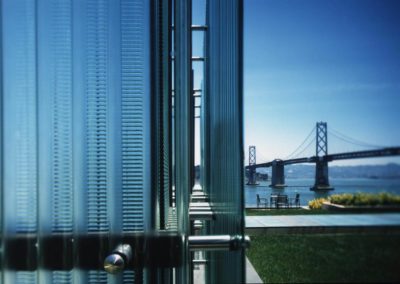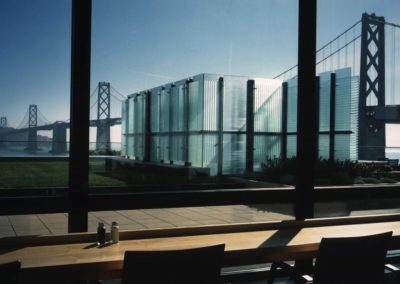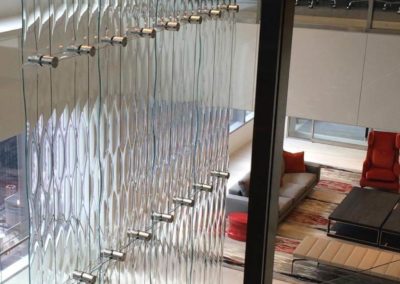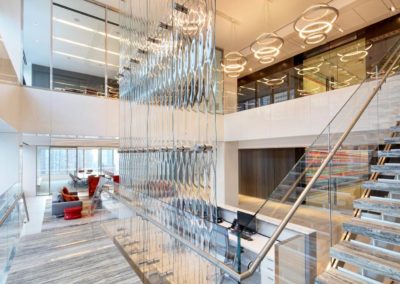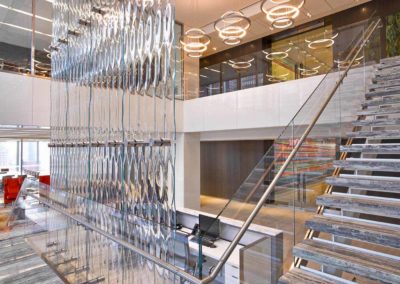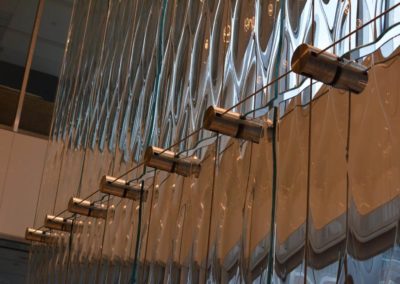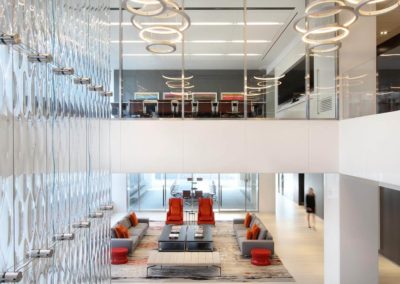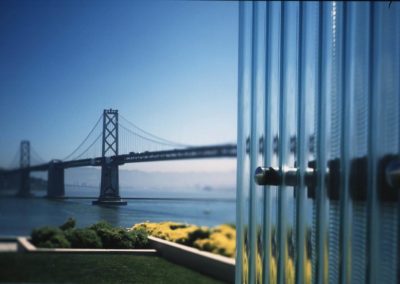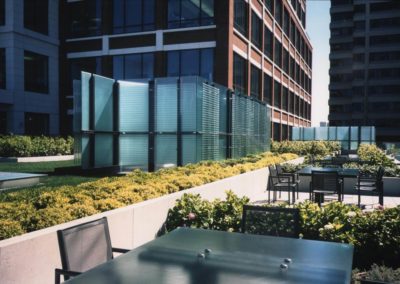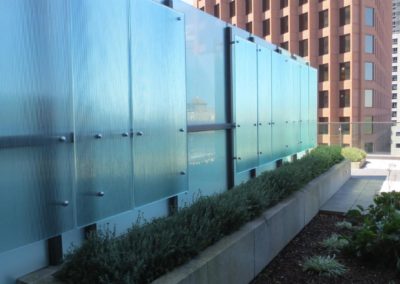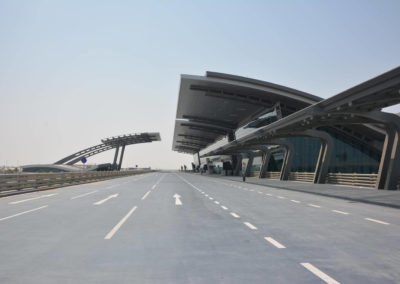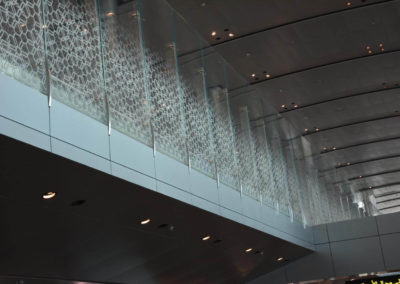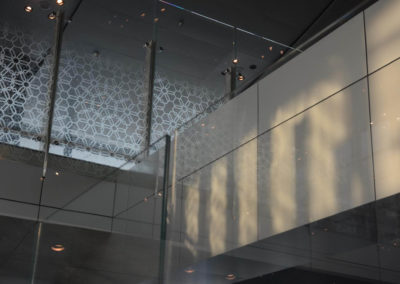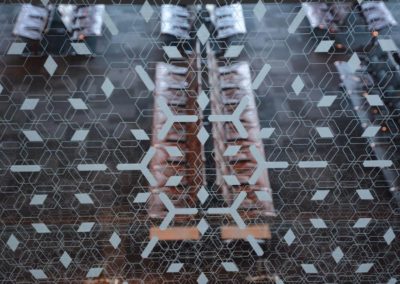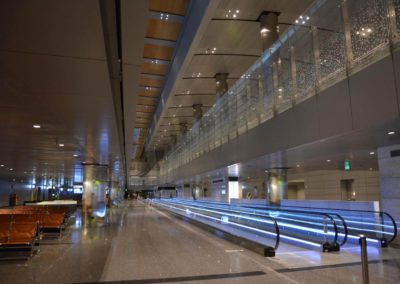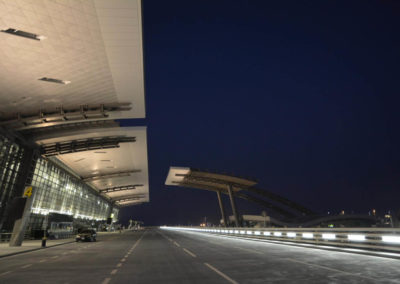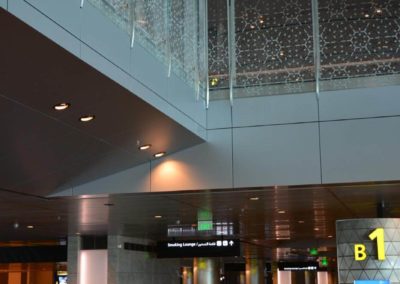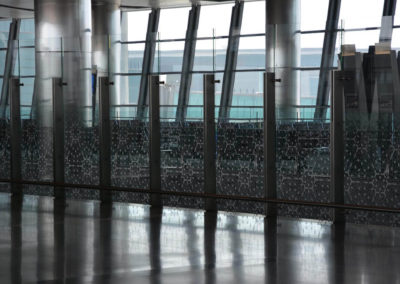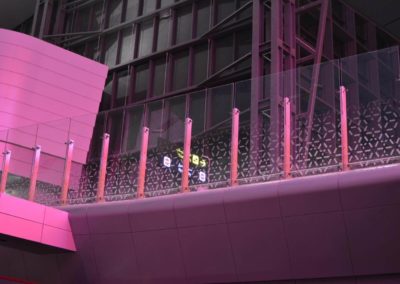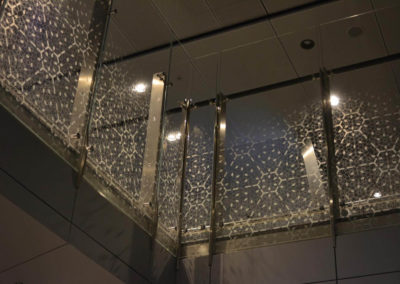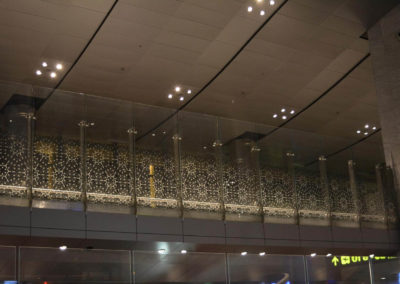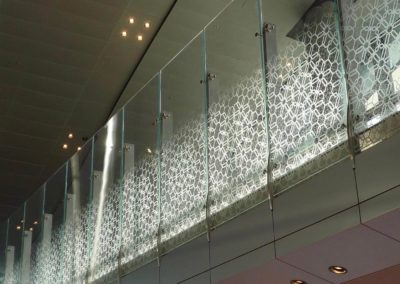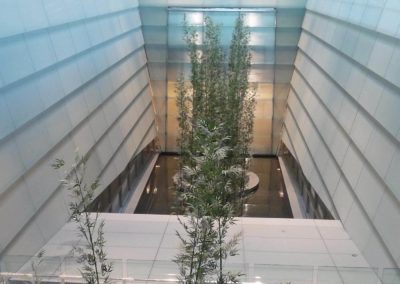Doha Qatar Airport
Hamad International Airport
Project Description
When HOK, on behalf of their client NDIA Steering Committee, engaged Joel Berman Glass Studios in 2007 regarding collaboration on a project to design and create secure corridor glazing for a new airport project in the Middle East, studio founder and president Joel Berman quickly grasped the scale of the undertaking. It represented the largest, most ambitious art glass project the studio would undertake in its more than 30 year history.
A next generation airport was to be built in Doha, Qatar, and the airport itself was to achieve destination status. The project’s head architect provided his vision: while it was understood that the volume of glass would involve a production effort, each of the three phases was to be a work of art.
Functionally, the requirement was for glazing of the secure passenger corridors in three airport concourses. The glass was to be patterned in such a way as to obscure the view within the corridor up to eye level height. HOK was familiar with Berman’s work, and approached the studio with the glass design challenge.
While researching concepts, Berman’s senior designer, Saleem Khattak, looked to the geography and cultural history of the region. Drawing from the contemplative art of Islam, Khattak developed a contemporary interpretation of the decorative arabesque motifs that figured prominently in the region’s architectural history. In these motifs, mathematically precise geometric forms in complex patterns serve to express ideas of beauty and perfection and symbolize humanity’s place in the universe.
Khattak developed a series of algorithmically arranged designs using polygonal shapes to convey micro, mezzo and macro patterns depending on the viewing distance. Shapes emerge from the pattern as the viewer moves toward, and away from the art. “While each concourse has its own identity,” Khattak said, “the patterns relate to each other.”
The composite panels, each one involving two sheets of glass laminated together, include patterning on three faces. The pattern was applied through a screen-printing process using white ceramic frit ink. To achieve the desired obscurity, the design gradually transitions from opaque at the lower portion of each panel through translucency to full transparency at the top.
“The spatial interaction within the pattern allows light to penetrate while the reflectivity of the frit ink prevents the eye from seeing past it,” observes Khattak. “This effect lends a jewel-like quality to the space.”
Joel Berman named the collection of patterns the Unity Series. “Within the studio a diverse team of talented and passionate artists and designers come together from a wide range of cultural and ethnic backgrounds,” said Berman. “We embrace this diversity; it unifies us. There is a message in the glass, and it’s a message of hope: that through the universal language of design the result will have a unifying influence on the lives of those it touches.”
Project: Hamad International Airport
Location: Doha, Qatar
Designers: Joel Berman, Saleem Khattak
Glass Design: Unity Series
Production: 6,000 panels, 170,000 sq. ft of glass, 5.5 kilometers of glazed corridors
Contact
419-6233 London Road
Richmond, BC Canada V7E 3S3
Tel. No. 604.218.0607
Email joel@joelberman.design
JBGS International photos courtesy Forms+Surfaces.
Other photos by Joel Berman.

